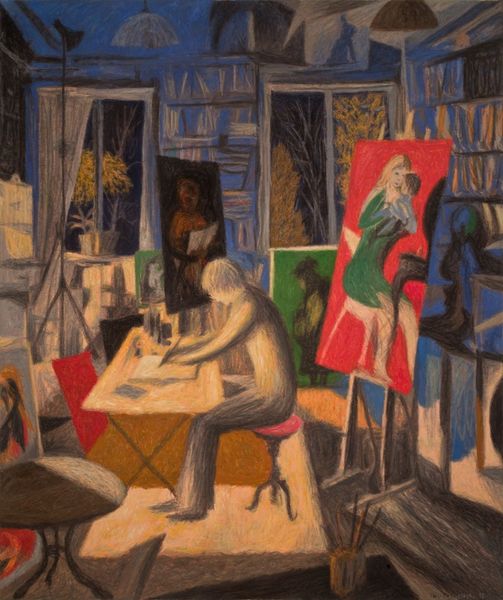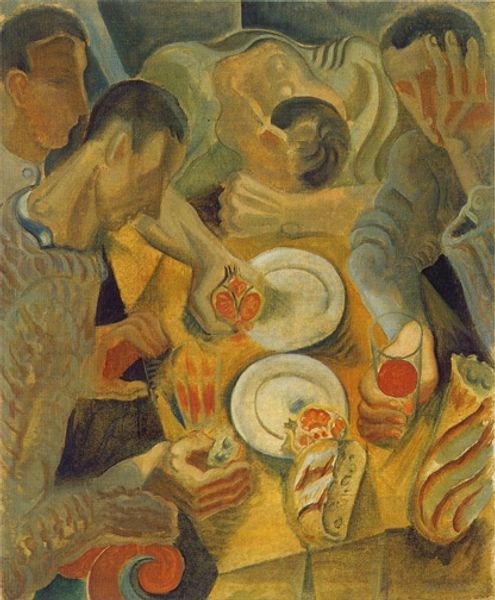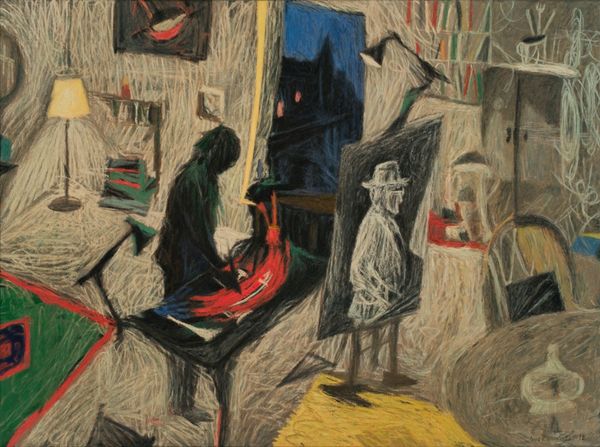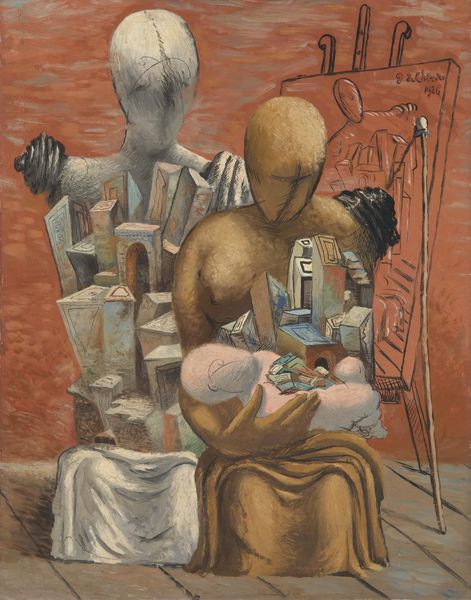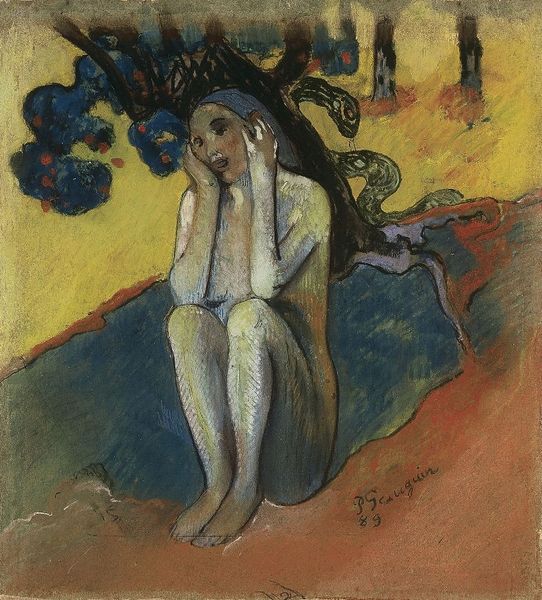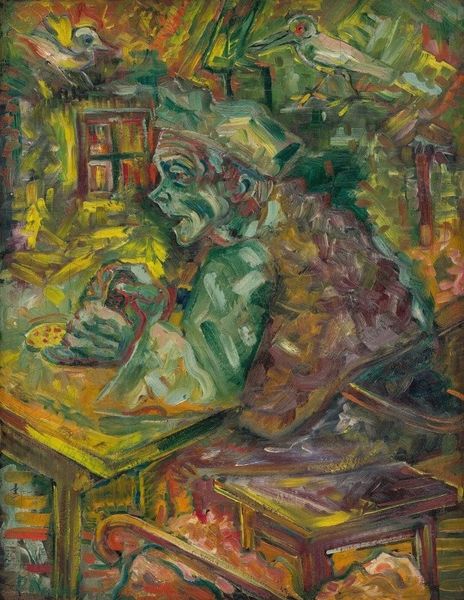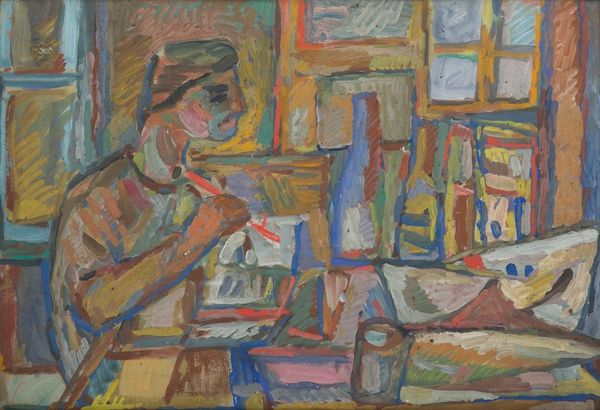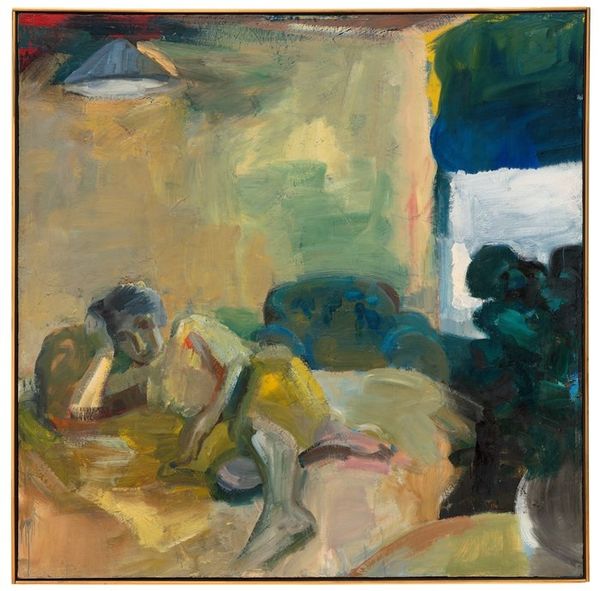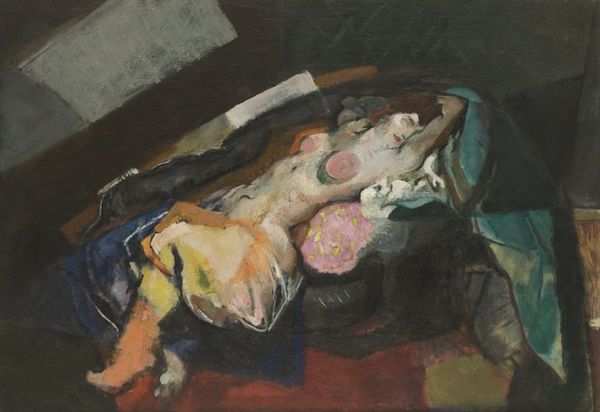
oil-paint
#
portrait
#
oil-paint
#
social-realism
#
oil painting
#
naive art
#
genre-painting
#
portrait art
Copyright: Philip Evergood,Fair Use
Curator: This oil painting, "Don't Cry Mother," was completed by Philip Evergood in 1944. Editor: My first impression is stark. The angles are sharp, the palette muted, but that doesn’t fully convey the deep sadness emanating from it. It feels like witnessing a silent scream. Curator: The distortion of form certainly adds to the overall emotional effect. Notice how the elongation of the mother's arms emphasizes a sense of yearning. The children are similarly presented, positioned almost as if fading into the architecture of the scene. Editor: It is social realism with a strong political statement, don’t you think? This piece was painted during the Second World War. Is it intended as commentary on wartime struggles? It’s interesting the artist chose a domestic scene. Empty plates rest upon a brightly coloured, but angular table. The table is surrounded by a domestic space partially destroyed. Curator: The vibrant hues used contrast sharply with the sorrow in the mother's downcast face, generating an almost unsettling disjunction, right? The artist juxtaposes those hopeful bright colours against images of the despair. If we think about it as a sign, what kind of significance can be extracted from its inherent contradictions? It gives us a means of interpreting the internal emotional state. Editor: I see your point. That stark table is positioned in a home destroyed, probably by war; empty plates suggest scarcity. To me, it’s all pretty devastating given that 1944 was also a moment of cautious hope as the tide turned. The image serves as an allegory of domestic lives forever scarred by conflicts of all forms. Curator: We can use that sense of scale you mentioned to view it as an expressionist portrait rather than merely a representation. Consider the planes and dimensions that push past what a viewer would call reality. Editor: I find it a potent depiction of the psychological toll that hardship exacts on families. Its power lies in making the invisible burdens so profoundly visible. The whole narrative unfolds within that damaged room. The viewer's focus centres almost instantly on their tragic grief and destitution. Curator: Yes, precisely. And by extension, that sense of anguish is ultimately what solidifies "Don’t Cry Mother’s" place within the canon. Editor: A haunting image of quiet devastation, achieved through brilliant compositional and figurative choices.
Comments
No comments
Be the first to comment and join the conversation on the ultimate creative platform.
